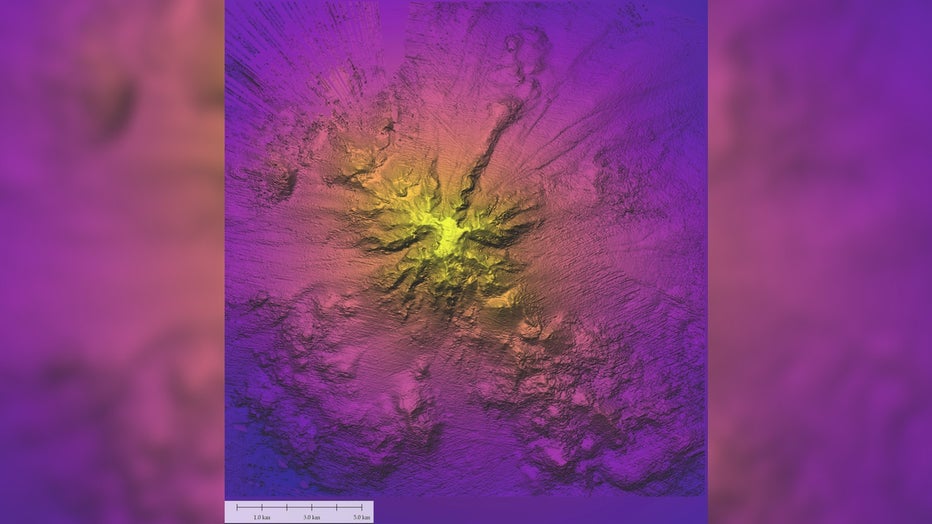Watch: Rare 'flying spaghetti monsters' spotted in recent deep sea expedition
Underwater footage shot off the coast of Chile during a 28-day expedition led to the discovery of 20 possible new species amid a thriving deep-sea ecosystem.
The expedition, led by researchers with the Schmidt Ocean Institute, explored the underwater mountain range known as the Nazca Ridge. Among the finds: a rare sighting of a creature commonly known as "flying spaghetti monsters," or Bathyphysa siphonophores.

A rarely seen Bathyphysa conifera, commonly known as flying spaghetti monster was documented on Dive 692 while the research team was surveying an unnamed and unexplored seamount (internally designated as T06) along the Nazca Ridge off the coast of Ch
Another creature, a live Promachoteuthis squid, was filmed for the first time. According to researchers, what’s known about the animal is based on a few collected specimens or from dead samples found in nets.
SEE THE GHOSTLY ANIMAL THAT HAS SET THE RECORD FOR THE DEEPEST-LIVING FISH ON EARTH
Footage from the expedition provides a clear view of the squid, along with several other creatures.
"The seamounts of the Southeastern Pacific host remarkable biological diversity, with species found nowhere else to date," said Prof. Alex David Rogers, Science Director of Ocean Census.
Another discovery they made involved the underwater mountain range itself – mapping a new underwater mountain, or seamount.

Map of the seamount. (Schmidt Ocean Institute / FOX Weather)
Nearly 2 miles tall, the mountain is home to a pristine coral garden about the size of three tennis courts, where organisms such as king crabs live.
"The discovery of a new seamount almost 2 miles tall – almost four times as tall as the Burj Khalifa – with a vibrant ecosystem was very exciting," said Dr. Jyotika Virmani, Co-Chief Scientist and Schmidt Ocean Institute Executive Director "Only 26% of the seafloor has been mapped to this high resolution and each expedition on Falkor (too) brings into focus a little more of the unknown seabed and life on our home planet."

